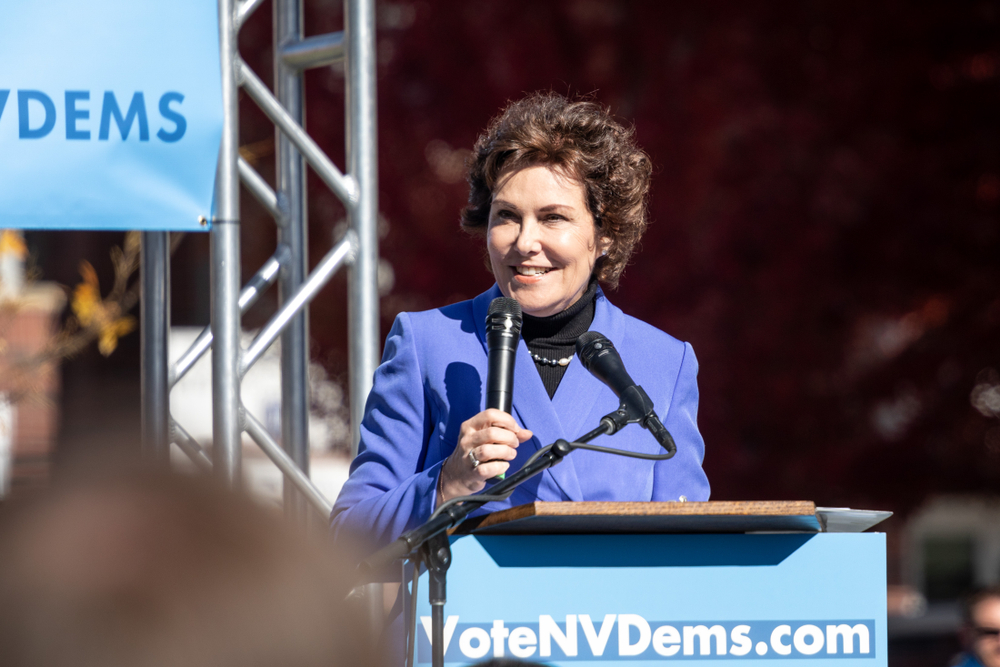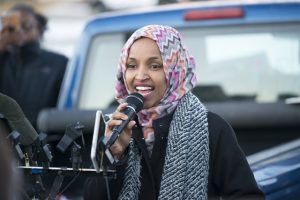by Diana Ohlbaum
The 116th Congress will seat more women than ever before—at least 125, an increase of 18. These women will be a more diverse group, among them 43 women of color, including the first two Muslim congresswomen, first two Native American congresswomen, first black congresswomen from Massachusetts and Connecticut, first two Latina congresswomen from Texas, and the youngest congresswoman. And they will be a more Democratic group, given that the number of female Republican lawmakers is expected to drop from 29 to 20. Only one of the 36 non-incumbent women elected to the House was a Republican.
The “pink wave” raises hope for an increasingly peaceful, compassionate, egalitarian, and inclusive approach to U.S. foreign policy. Sweden was the first to announce a “feminist foreign policy” in 2014. Canada stepped up in 2017 with its “Feminist International Assistance Policy.” And then, earlier this year, the UK’s Labor Party vowed to put women at the heart of British aid efforts. At least in theory, a Democratic House that is more representative of the ethnic and gender balance of America could start putting these ideas on the table.
But there’s a long distance between theory and reality. Here in the United States, foreign assistance is unpopular enough without lashing it to a term widely regarded as politically toxic. Women running for office have been wary about identifying themselves as feminists, much less pushing for a feminist foreign policy or foreign aid program. To the contrary, most of the first-time congresswomen (like other Democrats) focused their campaigns on domestic issues: health care, gun violence, education, and immigrant protections. Virtually no one wins elective office on a foreign-policy platform.
It is also questionable whether having more female leaders results in having less war. In the U.S. political environment, women often seek to establish their foreign policy credentials by espousing a muscular brand of foreign policy. As Secretary of State, Hillary Clinton made gender equality a moral imperative, but her hawkish views on the use of force undercut any pretense of a feminist foreign policy.
There are certainly candidates for foreign-policy leadership among the newly elected congresswomen. Several come with military and intelligence backgrounds, including Chrissy Houlahan, Elaine Luria, Mikie Sherrill, Elissa Slotkin, and Abigail Spanberger, which will allow them to speak with greater authority on national security issues. First-generation Americans Ilhan Omar and Rashida Tlaib are poised to contest the prevailing narrative on the Israeli-Palestinian conflict. But in a system that operates on seniority, they will not be the ones who determine the party line.
That doesn’t mean women can’t make a difference in the new Congress. First, Democratic women are positioned to hold some of the most powerful positions in the new House, including speaker, chair of the Appropriations Committee, and chair of the Financial Services Committee. In the Senate, women are expected to lead seven committees as chairs or ranking members, and five of the 10 members of the Democratic leadership team are women. From these positions of power, women can decide (or at least influence) which rules are adopted, which programs receive funding, which experts appear on hearing panels, which bills are taken up in committee, which amendments are offered, and which measures move to the floor for consideration.
Second, women legislators can make a difference simply by asking the questions that haven’t been asked and creating space for women’s voices to be heard. They can ensure that administration officials are publicly confronted about the effects of their policies on women and children in poor countries and on civilians in war zones. They can challenge the orthodoxies about the utility of nuclear weapons, the effects of a skyrocketing Pentagon budget, and the need for an expansive global military footprint. They can insist that U.S. military officers be held accountable for the rape, sexual harassment, and abuse that occur under their watch. They can elevate the experiences of marginalized groups and generate political pressure to shatter the status quo.
To maximize their impact, the women of the 116th Congress should develop a common agenda for the next two years. Although partisanship is stronger than gender in determining political views, surely Republican and Democratic women can identify a subset of issues to work on together. These could range from hiring more female national security staff and inviting women experts to testify at all Armed Services Committee hearings to promoting women’s participation in international peace negotiations.
Increasing women’s representation in Congress is a victory worth celebrating, but it won’t guarantee better policy. On the other hand, better policy won’t happen without women’s perspectives and leadership. The midterm elections offer an opportunity for women, individually and collectively, to apply a gender lens to budgets, policies, rules, and procedures, shining a light on inequities that for too long have been tolerated or overlooked.






I hope so but skeptical. I don’t know these women but judging from what I hear from women on the cable networks on CNN / FOX, I hear pretty much the same thing. Monica Crowley, raving Neocon, indistinguishable from any other others. On CNN, any female host just as snarky anti-trump as the men, totally interchangeable.
I’m certain there are individuals who are excellent but that’s my point, I think it depends on the individual. Tulsi Gabbard is great, I’d vote for her in a second.